The Red Flag is, among other things, a traditional symbol of workers’ power, dating back at least to the Merthyr Rising of 1831 when Welsh rioters used calf’s blood to stain their flag red.
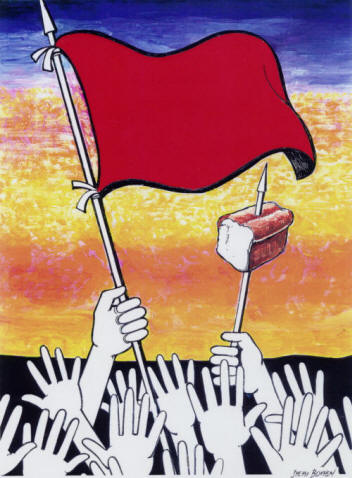
In the United States, however, you won’t see many red flags on Labor Day.
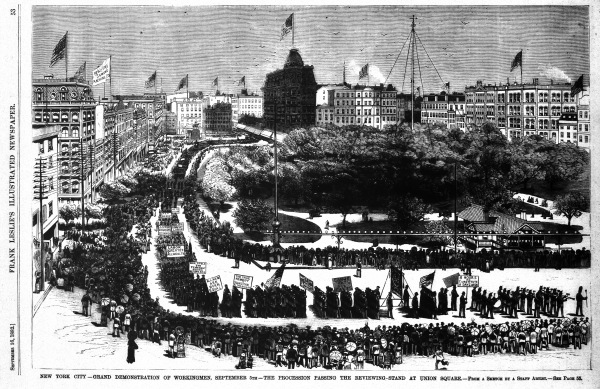
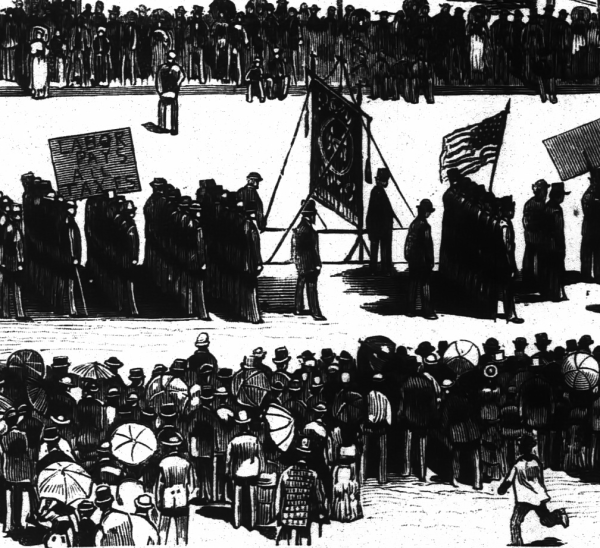
Judging from photographs online, flag flying on Labor Day in the US has from the beginning pretty much been limited to the US flag. Labor unions and their locals sometimes march with flags, but more often with banners held from cross-poles (or signs on poles) — see above. The very fact that the US celebrates Labor Day in September, rather than International Workers’ Day on the first of May, points to a desire to distance the American version from the Socialist holiday, and to head off any perceptions of un-Americanism with copious displays of the Stars and Stripes.
There is a prominent exception to this general lack of red flags in the US labor movement: the flag of the United Farm Workers.
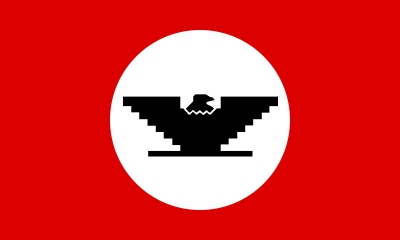
Ed Fuentes’ 2014 article, How One Flag Went From Representing Farmworkers to Flying for the Entire Latino Community: The Cultural History of the United Farm Workers’ Black Eagle, is well worth reading. He points to the simplicity and ease of manufacture of the design was one of its great strengths:
As a communication symbol used for posters and fliers, the mark wasn’t compromised by limited resources. When it needed to be printed, there would always be shops with PMS 185, a standard red, on hand. The lines were so definite and simple that the skills of volunteer nonartists or trained printers working in art centers around the West could shape the symbol of their identity with a nationalistic vigor. When the UFW began organizing lettuce and strawberry pickers in and around Salinas in the 1970s, women living in company housing turned their quarters into fabricas de banderas, or flag factories, to manufacture banners for the coming strike.
Fuentes also sees in the Black Eagle design connotations of non-violence:
The eagle’s head faces to the right, looking to the future. Under wings that mirror the architecture of Mesoamerican temples, the image is anchored in the past, and the base replaces talons, giving it a peaceful stability. This eagle is no urgent survivalist sweeping in to catch its prey.
If labor unions want to increase their visibility, on Labor Day and throughout the year, they might want to turn to Chavez’ simple and powerful flag for inspiration.
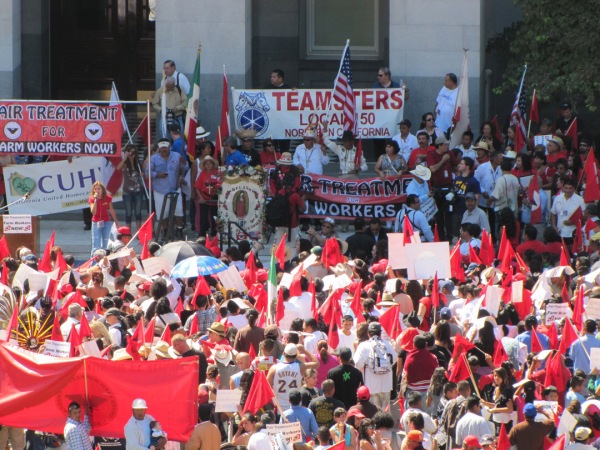

Interesting post.
The first time I went to the USA (in the late 1980s) I was with a British trade union delegation to study labour relations with the AFL-CIO. We were struck by the use of the Stars and Stripes by American unions, whereas in the UK our own (usually red) union banners and red flags would be much more common on marches and at rallies.
For many years in the UK, the Union Flag and St George’s Cross have been appropriated by extreme right wing groups, this and the very different culture to overt displays of nationality mean you would not see Union Jacks on May Day (International Workers Day).
[…] doesn’t raise the red flag on Labour Day or the women’s liberation flag on March 8th, yet they are expected to raise the […]
[…] doesn’t raise the red flag on Labour Day or the women’s liberation flag on March 8th, yet they are expected to raise the […]
[…] Parlement ne hisse pas le drapeau rouge à la fête du Travail ou l’emblème du Mouvement de libération des femmes le 8 mars ; […]